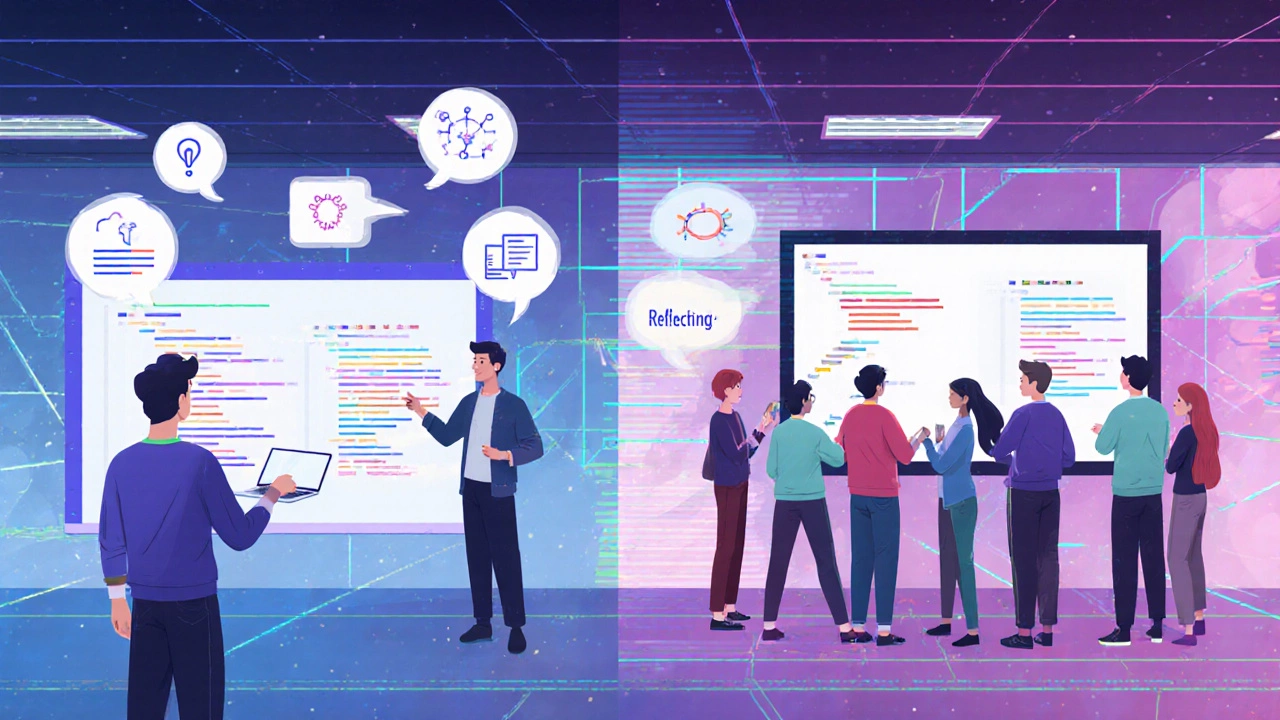Key Takeaways
- Andragogy, Transformative Learning, and Experiential Learning are the three most widely cited adult learning theories.
- Each theory offers a distinct lens on why adults learn and how instruction should be designed.
- Practical examples show how to apply the theories in workplace training, community courses, and online programs.
- A quick comparison table helps you match a theory to your learning objectives.
- Common pitfalls and tips for each theory keep you from falling into ineffective design.
When you hear the phrase adult learning theories, you probably expect a handful of academic models, but most practitioners actually work with just three core ideas. Understanding these ideas lets you design classes, workshops, or e‑learning that feel natural to adult participants. Below we break down each theory, share the scholars behind them, and give concrete steps you can use right now.
Adult Learning Theories are frameworks that explain how and why adults acquire knowledge, skills, and attitudes across formal and informal settings. They differ from the way children learn, focusing more on experience, self‑direction, and relevance to real‑world problems. The three pillars-Andragogy, Transformative Learning, and Experiential Learning-cover the most common scenarios you’ll encounter in corporate training, community education, and higher‑education programs for mature students.
1. Andragogy: Malcolm Knowles’ Human‑Centred Model
Andragogy is the theory that adult learning is self‑directed, experience‑based, goal‑oriented, and relevant to immediate life tasks, first popularized by Malcolm Knowles in the 1970s. Knowles identified six principles that still guide curriculum designers today:
- Need to Know: Adults want to understand why they are learning something before they invest effort.
- Self‑Concept: As people mature, they see themselves as self‑directed learners rather than dependent objects.
- Experience: Prior experience becomes a rich resource for new learning; instructors act as facilitators, not lecturers.
- Readiness to Learn: Adults are ready to learn when the subject aligns with real‑life roles or problems.
- Orientation to Learning: Learning is problem‑centered rather than subject‑centered.
- Motivation: While external rewards matter, internal factors-self‑esteem, curiosity, and personal growth-drive most adult learners.
In practice, an Andragogical workshop might start with a short poll: “What real challenge are you trying to solve?” The results shape the agenda, and participants share case studies from their jobs. The facilitator then weaves theory with those examples, allowing learners to see immediate relevance.
2. Transformative Learning: Jack Mezirow’s Critical Reflection
Transformative Learning is a process where adults change their frames of reference through critical reflection and discourse, introduced by Jack Mezirow in the late 1970s. The core idea is that adult learning can be more than skill acquisition; it can reshape how learners see the world.
Mezirow outlined ten phases, but the most actionable steps are:
- Experience a disorienting dilemma: A situation that challenges existing assumptions (e.g., a manager confronting unconscious bias).
- Engage in self‑examination: Learners question why they think the way they do.
- Critically assess assumptions: Through dialogue, participants test the validity of their beliefs.
- Plan a new role or perspective: They conceptualize an alternative way of acting.
For example, a community college could run a series of seminars on climate justice. Participants first hear a stark local climate impact story (disorienting dilemma), then write reflective journals, discuss in small groups, and finally develop personal action plans that shift their environmental worldview.

3. Experiential Learning: David Kolb’s Cycle of Action
Experiential Learning is a four‑stage cycle where concrete experience, reflective observation, abstract conceptualization, and active experimentation drive learning, formalized by David Kolb in 1984. The model emphasizes learning by doing, then thinking about what happened, forming ideas, and testing them.
The cycle looks like this:
- Concrete Experience: Learners perform a task (e.g., a mock sales pitch).
- Reflective Observation: They discuss what went well and what felt awkward.
- Abstract Conceptualization: The group derives principles (e.g., “Ask open‑ended questions early”).
- Active Experimentation: Participants apply the new principle in a second role‑play.
Because the cycle repeats, learning deepens each time the learner re‑enters the process. Many tech bootcamps use this model: students code a feature (experience), review peer feedback (observation), read design patterns (conceptualization), then refactor the code (experimentation).
How the Theories Overlap and Differ
| Theory | Key Principle | Typical Strength | Common Challenge |
|---|---|---|---|
| Andragogy | Self‑directed, problem‑centered learning | High relevance, respects learner experience | Requires facilitators who can shift from lecturing to coaching |
| Transformative Learning | Critical reflection that changes worldview | Deep attitude change, suitable for social‑justice topics | May need safe space for vulnerability |
| Experiential Learning | Learning cycle of doing, reflecting, theorizing, testing | Concrete skill acquisition, rapid feedback loops | Resource‑intensive; needs time for cycles |
While the table lists them separately, real‑world programs often blend elements. A leadership development course might start with a self‑directed project (Andragogy), embed reflective journaling about assumptions (Transformative), and finish with a role‑play that cycles back to practice (Experiential).
Checklist for Designing Adult Learning Experiences
- Identify the primary learning goal: skill, attitude, or knowledge shift?
- Choose the theory that best aligns with that goal.
- Map activities to the theory’s core principles (e.g., problem case for Andragogy, dilemma for Transformative, cycle steps for Experiential).
- Allocate time for reflection-whether through journals, group debriefs, or online forums.
- Plan assessment that matches the theory: performance tasks for Experiential, reflective essays for Transformative, self‑assessment rubrics for Andragogy.
- Gather feedback after each module to refine the design.

Common Pitfalls and Pro Tips
Pitfall 1: Treating adult learners like children by delivering long lectures. Pro tip: Start every session with a question that shows relevance.
Pitfall 2: Assuming transformation happens without safe space. Pro tip: Set ground rules for respect, use anonymous reflection tools.
Pitfall 3: Skipping the reflection stage in Experiential Learning. Pro tip: Build a 10‑minute debrief after each activity; ask “What did you notice?”
Real‑World Applications
Below are three brief case studies that illustrate each theory in action.
- Andragogy in a hospital setting: Nurses completed a self‑paced online module on infection control. The module began with a real‑world outbreak scenario, prompting learners to identify gaps in current practices. After watching short videos, they posted how they would change a protocol, receiving peer feedback.
- Transformative Learning in a public‑sector workshop: Mid‑level civil servants attended a session on equity policy. Participants watched a powerful documentary highlighting systemic bias (disorienting dilemma), then wrote reflective statements that were shared in facilitated circles. The workshop concluded with each attendee drafting a personal commitment to embed equity checks in their daily work.
- Experiential Learning in a software bootcamp: Students built a simple CRUD app (concrete experience), reviewed code with mentors (reflective observation), learned design patterns (abstract conceptualization), and then refactored the app using those patterns (active experimentation). The cycle repeated with increasing complexity, cementing both skill and confidence.
Next Steps for Your Organization
Pick one of the three theories that best matches your upcoming program’s goal. Draft a one‑page design brief that lists:
- Target audience and their prior experience.
- Learning objective (skill, attitude, or knowledge).
- Chosen theory and why it fits.
- Key activities mapped to the theory’s principles.
- Assessment method aligned with the outcome.
Run a pilot with a small group, collect reflections, and adjust. The iterative cycle itself mirrors Experiential Learning, reinforcing the very concepts you’re teaching.
What is the main difference between Andragogy and Pedagogy?
Andragogy assumes adult learners are self‑directed, bring life experience, and need relevance, while Pedagogy treats learners as dependent on the teacher and focuses on subject‑centered instruction.
Can I blend Transformative Learning with Andragogy?
Yes. Start with Andragogical problem‑centered tasks, then introduce a disorienting dilemma that forces critical reflection, effectively merging the two approaches.
How long should an Experiential Learning cycle take?
It varies by complexity, but a concise cycle can fit into a 60‑90 minute workshop: 15 minutes for experience, 20 for reflection, 15 for conceptualization, and 20 for experimentation.
Is Transformative Learning only for social‑justice topics?
No. Any content that challenges existing assumptions-like leadership style, financial habits, or digital ethics-can trigger transformative learning when a disorienting dilemma is presented.
What assessment methods match each theory?
Andragogy works well with self‑assessment rubrics and real‑world projects. Transformative Learning pairs with reflective essays or portfolio narratives. Experiential Learning suits performance‑based tasks, simulations, and skill checklists.

